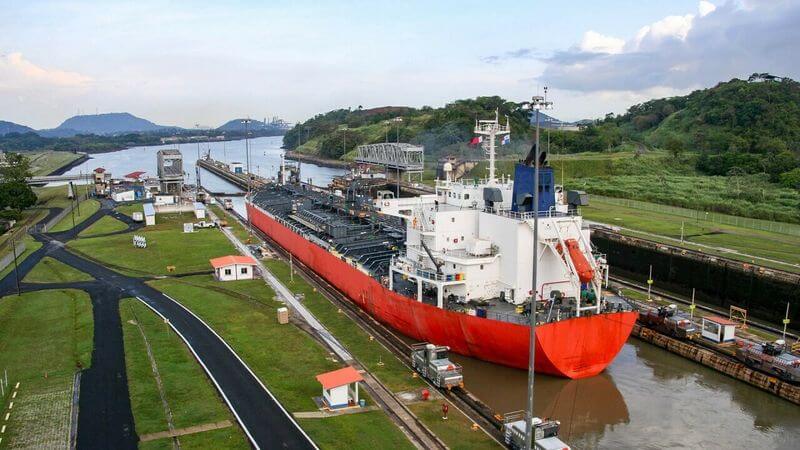Last week, while on vacation in Panama, I was awed watching a huge ship move through the Miraflores locks from the Pacific to the Atlantic Ocean. It is the equivalent of a small mountain of about a 106 feet wide and up to 950 feet in length, as this is the Panamax or the maximum size ship that can pass through the Canal. The canal was opened in 1914, changing the maritime shipping and commerce forever. Instead of costly and hazardous sailing around the Southern Tip of South America, Cape Horn, ships could cross easily and safely in about 8 hours from the Atlantic to the Pacific, cutting costs and time significantly. So much so, that ships are designed today to fit the Panamax.
As a former software engineer, who could at best turn something off and on again, and see if it works – I am incredibly impressed by large scale systems with moving parts, that actually work. While software has definitely enabled the front end of eCommerce, it is these shipping and transportation breakthroughs that enable the important part of eCommerce. That is delivering good from the manufacturers or merchants – into the hands of consumers.
In 1956, McLean developed the metal shipping container, which replaced the traditional break bulk method of handling dry goods and revolutionized the transport of goods and cargo worldwide. The container invention enabled cutting labor cost and time of loading and unloading a ship, by moving the loading/unloading bottleneck from ship upstream, breaking it down to many smaller containers that can be loaded separately, in different locations, by different people. Today, goods are designed to fit into a container. Otherwise, their shipping costs would skyrocket.
In 1971, Frederick W. Smith founded FedEx, and made it possible to “overnight” small packages and documents. His small, dedicated planes operating in a hub and spoke model, made it possible for all of us today to received goods quickly, in small packages, and low cost. Similar to the Panama canal and the metal container, FedEx shipping costs dictate how products are designed to optimize delivery.
What’s next? Is it the Amazon drones who would literally “drop ship” on us? Or is it 3D printers that would create the product in front of our eyes at our homes? In any case, it would be about cutting eCommerce shipping time and cost, in an effort to appease our ever growing craving for immediate satisfaction and instant delivery.
About the Author: Zohar Gilad is the Co-Founder and CEO of InstantSearch+ – a service that brings state-of-the-art ecommerce site search at an affordable cost to millions of merchants worldwide. InstantSearch+ supports over 100,000 merchants and publishers running sites on Magento, Shopify, WooCommerce, Wix and Custom sites
